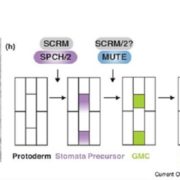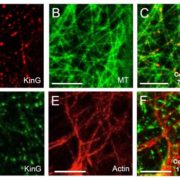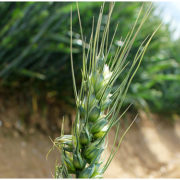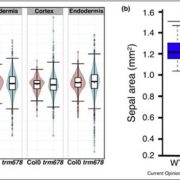A single gene converts Brassicaceae from annual to perennial form
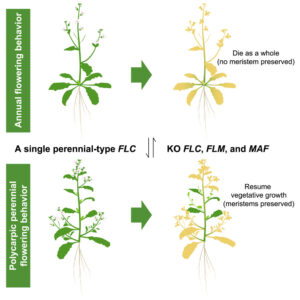 Polycarpic perennials, as opposed to annual plants, flower multiple times over several growing seasons throughout their lifecycle. To do that, they must retain a vegetative meristem that does not produce flowers during the reproductive phase. MADS-box transcription factors like FLOWERING LOCUS C (FLC) contribute to this process by repressing the floral transition in the meristem. While evidence suggests that annual plants in the Brassicaceae have evolved multiple times from perennial ancestors via changes in the expression pattern of FLC, the genetic details of these evolutionary transitions remain unclear. In this paper, Zhai and colleagues shed light on the molecular mechanisms that allow the switch from a perennial to an annual lifestyle within the Brassicaceae, by combining genomics, epigenomics, transcriptomics, and reverse genetics. They focused on four species from two distinct genera and showed that differences in the regulation and functionality of a set of homologous MADS-box transcription factors underly the perennial-to-annual transition. Remarkably, transforming Arabidopsis thaliana and Brassica rapa, both annual plants, with the perennial homologs under control of their native promoters led to a perennial-like phenotype. This study provides insights into the molecular mechanisms driving different life strategies in Brassicaceae, emphasizing the role of epigenetic modifications and regulatory genomic regions in the evolution of new traits. (Summary by Carlo Pasini @Crl_Psn) Cell 10.1016/j.cell.2024.04.047
Polycarpic perennials, as opposed to annual plants, flower multiple times over several growing seasons throughout their lifecycle. To do that, they must retain a vegetative meristem that does not produce flowers during the reproductive phase. MADS-box transcription factors like FLOWERING LOCUS C (FLC) contribute to this process by repressing the floral transition in the meristem. While evidence suggests that annual plants in the Brassicaceae have evolved multiple times from perennial ancestors via changes in the expression pattern of FLC, the genetic details of these evolutionary transitions remain unclear. In this paper, Zhai and colleagues shed light on the molecular mechanisms that allow the switch from a perennial to an annual lifestyle within the Brassicaceae, by combining genomics, epigenomics, transcriptomics, and reverse genetics. They focused on four species from two distinct genera and showed that differences in the regulation and functionality of a set of homologous MADS-box transcription factors underly the perennial-to-annual transition. Remarkably, transforming Arabidopsis thaliana and Brassica rapa, both annual plants, with the perennial homologs under control of their native promoters led to a perennial-like phenotype. This study provides insights into the molecular mechanisms driving different life strategies in Brassicaceae, emphasizing the role of epigenetic modifications and regulatory genomic regions in the evolution of new traits. (Summary by Carlo Pasini @Crl_Psn) Cell 10.1016/j.cell.2024.04.047



